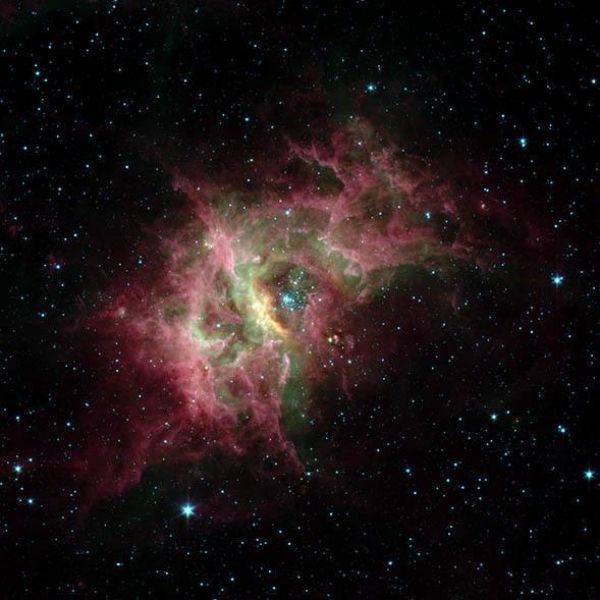University of Maryland researchers created the first high-resolution image of an expanding bubble of hot plasma and ionized gas where stars are born. Previous low-resolution images did not clearly show the bubble or reveal how it expanded into the surrounding gas.
The researchers used data collected by the Stratospheric Observatory for Infrared Astronomy (SOFIA) telescope to analyze one of the brightest, most massive star-forming regions in the Milky Way galaxy. Their analysis showed that a single, expanding bubble of warm gas surrounds the Westerlund 2 star cluster and disproved earlier studies suggesting there may be two bubbles surrounding Westerlund 2. The researchers also identified the source of the bubble and the energy driving its expansion. Their results were published in The Astrophysical Journal on June 23, 2021.
“When massive stars form, they blow off much stronger ejections of protons, electrons and atoms of heavy metal, compared to our sun,” said Maitraiyee Tiwari, a postdoctoral associate in the UMD Department of Astronomy and lead author of the study. “These ejections are called stellar winds, and extreme stellar winds are capable of blowing and shaping bubbles in the surrounding clouds of cold, dense gas. We observed just such a bubble centered around the brightest cluster of stars in this region of the galaxy, and we were able to measure its radius, mass and the speed at which it is expanding.”
Read More: University of Maryland
The RCW 49 galactic nebula pictured above is one of the brightest star-forming regions in the Milky Way. By analyzing the movement of carbon atoms in an expanding bubble of gas surrounding the Westerlund 2 star cluster within RCW 49, a UMD-led team of researchers have created the clearest image to date of a stellar-wind driven bubble where stars are born. (Photo Credit: NASA/JPL-Caltec/E.Churchwell University of Wisconsin)


